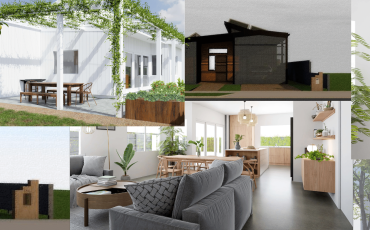Wood Products Industry – University Educator Workshop Presentations
The following presentations were delivered at the WoodSolutions Industry – University Educator Workshop on the 7-8th of November 2022.
The following presentations were delivered at the WoodSolutions Industry – University Educator Workshop on the 7-8th of November 2022.

Our Technical Design Guide #30 titled Timber Concrete Composite Floors outlines a procedure for engineering design based on Eurocode 5 and
Our Technical Design Guide #02 applies to buildings of Classes 2 & 3. If your project is a Class 2 or 3 building of Type C construction, it can only be one storey high (refer Table C1.1, NCC 2019 Building Code of Australia - Volume One, page 65). Vertical separation of openings only applies to Type A construction, but clearly could not apply to a building of only one storey, regardless of the type of construction. Your external walls will only be required to have an FRL if they are less than 1.5 m from a fire source feature, as defined in the BCA (refer Table 5, page 98).

We are not aware of an Australian Standard that deals with the installation of timber cladding. Installation is covered in various guide documents published by timber producers and timber organisations, eg. Timber Queensland has a data sheet that can be downloaded via this link http://www.dtmtimber.com.au/downloads/TQ_TDS/tds_05_Cypress-Hardwood-Cladding_final.pdf. However, there is an Australian Standard that deals with the quality of hardwood "milled products" such as cladding.
The 2019 edition of the BCA vol. 2 deals with timber cladding in clause 3.5.4.2. Vertically oriented cladding is described as "profiled timber", as opposed to "weatherboards" which are fixed horizontally. Detailed fixing requirements are given for "splayed and profiled timber weatherboards", but no fixing requirements are given for "profiled timber boards fixed in a horizontal, vertical or diagonal direction" - clause 3.5.4.2 (b). Nevertheless, our recommendation is two nails through the face of each board at each fixing point.

Unfortunately your photo is a bit washed out and the yellow colour doesn't show up. Also it's not clear what species of timber it is. Yellow streaks are more common in tropical timbers such as merbau, and the African species afzelia. In the case of afzelia, CSIRO describes the yellow substance as "a yellow dye, afzelin, that may discolour fabrics under moist conditions". Similar yellow deposits occur in the vessels of merbau, while some tropical woods have white deposits in the vessels (balau and others).
Are you looking for a supplier?